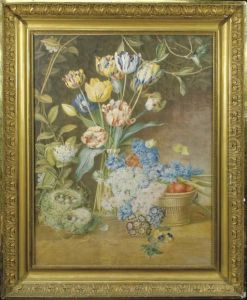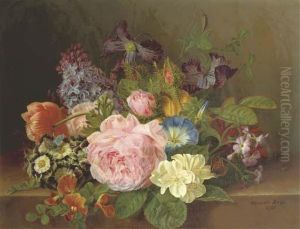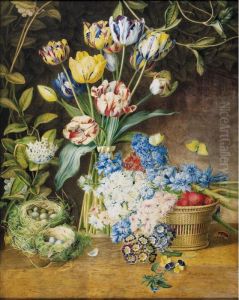Henriette Geertruida Knip Paintings
Henriette Geertruida Knip was a Dutch artist born on June 10, 1783, in 's-Hertogenbosch, Netherlands. She was part of a family of artists; her father was painter Nicolaas Frederik Knip, and her aunt was the well-known artist Pauline Knip. Henriette initially received her artistic training from her father and later from the landscape painter Gerrit Jan Michaëlis.
Henriette Geertruida Knip specialized in creating detailed drawings and watercolor paintings of animals and plants, with a particular focus on botanical subjects. Her work was characterized by its precision and her ability to capture the delicacy of nature. She developed a reputation for her talent in capturing the beauty and intricacy of her subjects, helping to promote an appreciation for the natural world through her art.
During her career, Henriette faced the challenges of being a female artist in the early 19th century, a period when the art world was predominantly male-dominated. Despite these obstacles, she managed to establish herself as a respected artist, exhibiting her work at various shows, including the Salon de Paris. Henriette's paintings were appreciated for their technical skill and her contribution to the field of natural history illustration.
Henriette's personal life was marked by her marriage to another artist, Jan Willem Pieneman, in 1829. The union was, however, short-lived as they separated after only a few years. Despite her personal setbacks, Henriette continued to work and contribute to Dutch art until her later years.
Henriette Geertruida Knip passed away on August 23, 1842, in Berlicum, Netherlands. Her legacy lives on through her detailed and delicate artworks, which continue to be appreciated by art enthusiasts and naturalists alike. Henriette's contributions to botanical art are especially recognized, and her works remain a part of Dutch cultural heritage, exemplifying early 19th-century natural history illustration.










